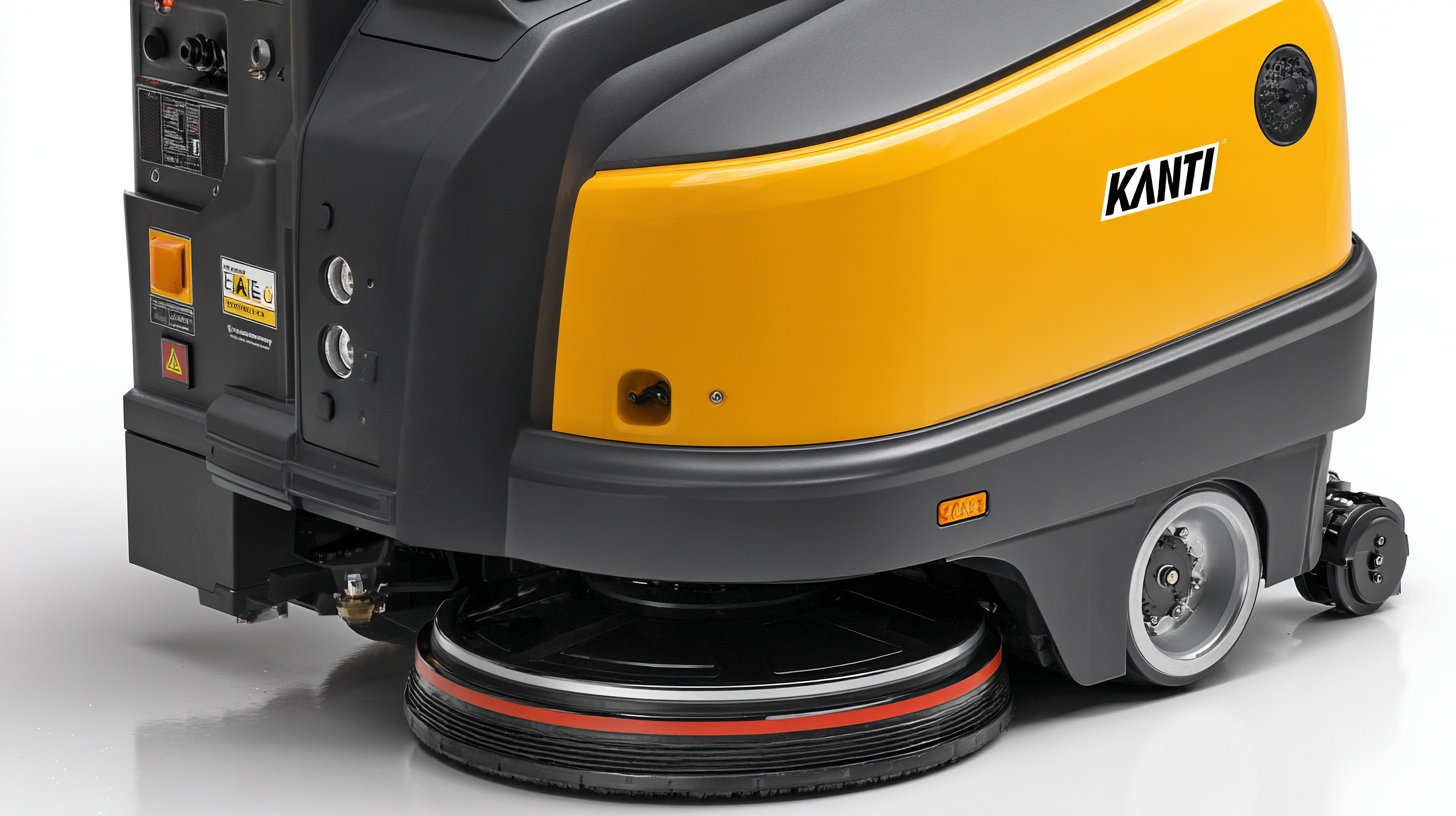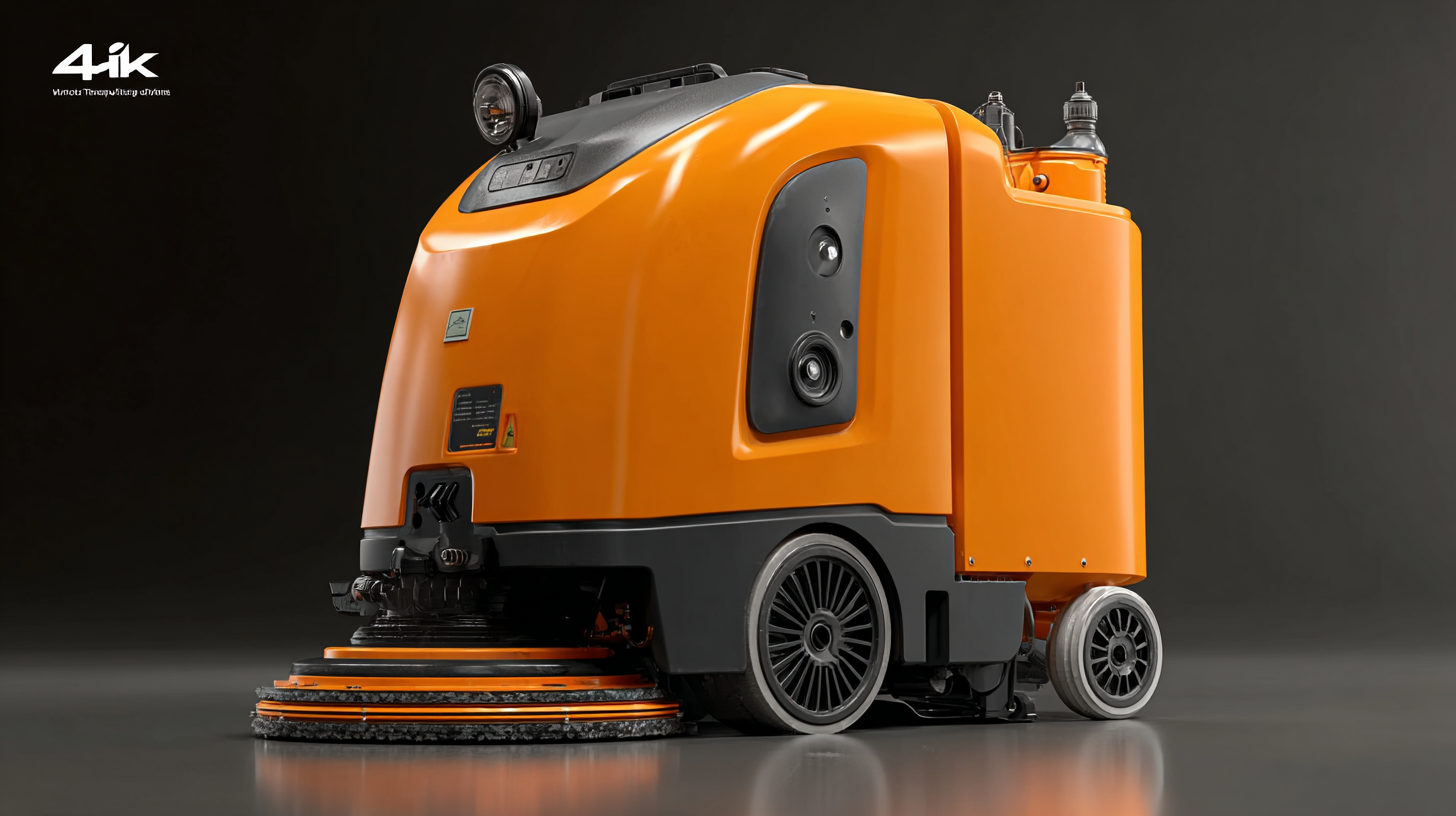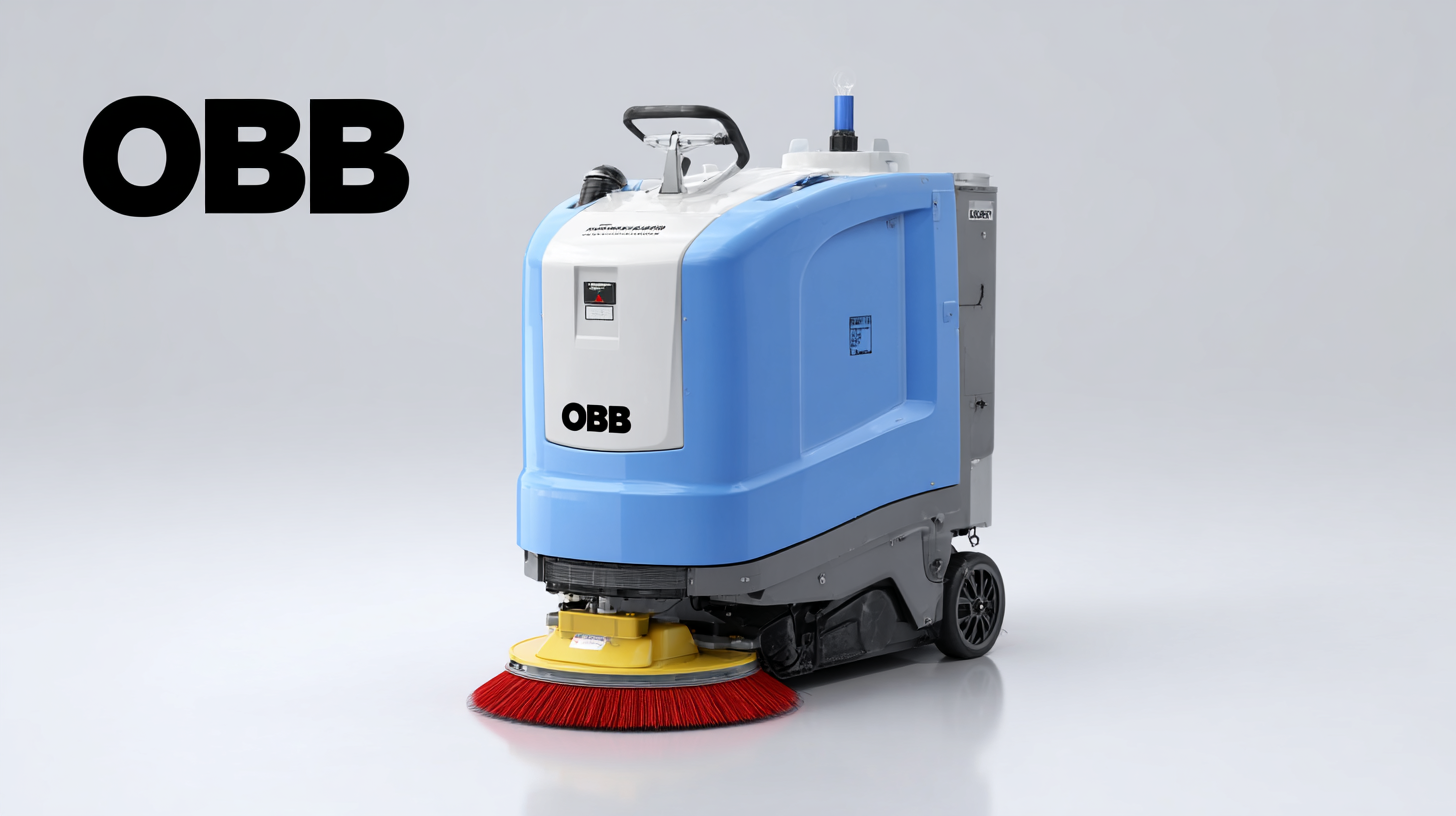Inquiry
Form loading...
The efficiency and effectiveness of cleaning operations have become increasingly important in various industries, driving the demand for advanced cleaning equipment such as the Floor Scrubber Dryer. According to a report by IBISWorld, the commercial cleaning services industry is expected to reach $61 billion by 2024, highlighting the growing necessity for high-performing cleaning solutions. In particular, the Floor Scrubber Dryer has emerged as an indispensable tool, combining scrubbing and drying functions into one streamlined process, thereby reducing labor time and improving floor hygiene. As the market pivots towards innovative and reliable cleaning products, the focus on quality manufacturing in China has positioned it as a global leader in this sector.

This blog will delve into the technical specifications of the best floor scrubber dryers available today, emphasizing the significance of durability and efficiency that meet the rigorous demands of modern cleaning environments.
When it comes to selecting the ideal floor scrubber dryer, several key features must be considered to ensure maximum efficiency and effectiveness in cleaning. First and foremost, the size and weight of the machine play a crucial role. A portable and lightweight model is advantageous for navigating tight spaces, while larger, robust scrubbers are better suited for expansive areas. Additionally, the tank capacity is essential; a larger tank allows for prolonged use without constant refilling, making large-scale cleaning more streamlined.
Another vital aspect to evaluate is the machine's scrubbing mechanism. Look for floor scrubber dryers with adjustable brush pressure and multiple pad options, as these features enhance adaptability across various floor types, from delicate tiles to rugged surfaces. Moreover, modern machines often come equipped with smart technology, such as automatic water dosage and battery management systems, to optimize performance and extend operational time. Lastly, don't overlook the importance of user-friendly controls and maintenance features, which can significantly impact the overall cleaning experience and downtime.
This chart illustrates key specifications to consider when selecting a floor scrubber dryer, including battery life, tank capacity, weight, cleaning width, and noise level. These metrics are crucial for evaluating the efficiency and suitability of different models for various cleaning tasks.
When selecting a floor scrubber dryer, it's essential to understand the different types available on the market. The main categories include walk-behind, ride-on, and robotic scrubbers. According to a recent report by Grand View Research, the global floor scrubber market is expected to grow significantly, projected to reach USD 1.5 billion by 2025, largely due to the rise in automation in cleaning processes. Walk-behind scrubbers are ideal for small to medium spaces, providing excellent maneuverability and cleaning power. Ride-on models are preferable for larger areas, maximizing efficiency and reducing labor costs, as operators can cover more ground in less time. Robotic scrubbers, though still emerging, are gaining popularity for their ability to autonomously maintain floors with minimal human intervention.
Tips: When choosing a floor scrubber dryer, consider the surface type and size of the area to be cleaned. For textured surfaces, a rotary scrubber may perform better, while flat surfaces can benefit from disc scrubbers. Furthermore, ensure the machine's water and cleaning solution capacity aligns with your operational needs to avoid excessive downtime during refills.
Another key factor to consider is the scrubber’s efficiency ratings. Research indicates that machines with variable speed settings not only enhance cleaning effectiveness but also conserve water and chemicals. Operators should look for units equipped with advanced filtration systems, as these can significantly improve indoor air quality by trapping dust and allergens, making them ideal for sensitive environments like hospitals and schools.
| Model | Type | Cleaning Width (mm) | Water Tank Capacity (L) | Battery Life (hours) | Weight (kg) |
|---|---|---|---|---|---|
| Model A | Walk-Behind | 500 | 50 | 2.5 | 70 |
| Model B | Rider | 600 | 60 | 3.0 | 120 |
| Model C | Compact | 400 | 30 | 2.0 | 45 |
| Model D | Autonomous | 700 | 80 | 4.0 | 150 |
When evaluating manufacturers of floor scrubber dryers, quality and reliability should be your top priorities. A reputable manufacturer will often have a robust quality assurance process in place, ensuring that every component of the scrubber dryer meets high standards. Look for companies that provide detailed technical specifications and offer certifications that demonstrate compliance with industry regulations. This not only reflects their commitment to quality but also assures you of the product's durability and performance in demanding environments.

In addition to quality, consider the manufacturer’s track record in reliability. Research customer reviews and case studies to gain insight into how their machines perform over time. A reliable manufacturer will have a history of delivering products that require minimal maintenance and are built to last. Furthermore, assess the availability of customer support and spare parts, as a responsive service team can significantly reduce downtime and keep your operations running smoothly. By focusing on these key elements, you can ensure that your investment in a floor scrubber dryer aligns with your operational efficiency goals.
When choosing a floor scrubber dryer, balancing cost and efficiency is paramount for optimizing your cleaning operations. Organizations often face the dilemma of selecting a model that fits their budget while still providing the necessary cleaning performance. Typically, more expensive units are equipped with advanced features such as higher water recovery rates and smarter scrubbing mechanisms. However, assessing the long-term value these features provide can lead to significant cost savings over time.
Efficiency isn’t solely about the upfront investment; it also encompasses the machine's operational costs, maintenance, and reliability. A scrubber dryer that consumes less water and cleaning solution reduces operational costs and minimizes environmental impact. Furthermore, durable models with lower maintenance requirements can save time and resources, making them more economical in the long run. Therefore, it’s essential to evaluate a scrubber dryer not just on its purchase price, but on the overall value it delivers in terms of efficiency and sustainability tailored to your specific needs.
In the rapidly evolving landscape of floor cleaning technology, innovative solutions are at the forefront of enhancing performance. With the advent of advanced technologies, floor scrubber dryers are now equipped with features that dramatically boost efficiency. One of the key trends is the integration of AI-powered tools that optimize cleaning routes and schedules, ensuring that every square inch is meticulously maintained while minimizing water and detergent usage. This precision not only improves cleanliness but also reduces operational costs for businesses.
Tip: When selecting a floor scrubber dryer, consider models that incorporate smart technology. Look for those that offer real-time monitoring and analytics—this can significantly enhance your cleaning strategy and ensure you’re maximizing your resources.
Moreover, innovative cooling management technologies are being developed, which protect sensitive equipment—an essential feature in places where server systems operate. Such advancements create a synergistic effect, allowing for improved cleaning procedures while simultaneously safeguarding critical infrastructure.
Tip: Stay informed about the latest technology trends; investing in scrubber dryers that utilize next-gen tech can lead to significant performance improvements. Understanding the benefits of these innovations can help you make informed decisions that drive efficiency and productivity in your operations.

